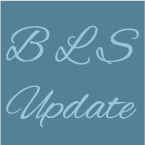
With non-essential type businesses shutting down (either voluntarily or state-ordered), business owners are worried and wondering whether they will be able to pay their bills and if they need (and how they can afford) to continue paying their employees. Similarly, workers who are not working because of business closure, having to take time off to care for their children while schools are closed, having been quarantined, or caring for a family member who is quarantined, are worried if and how they might receive their next paycheck.
On March 18, 2020 the President signed the Families First Coronavirus Act (H.R. 6201) which was intended to ease the burden stemming from the COVID-19 pandemic. The Act provides family and medical leave, along with sick leave, to workers, while providing tax credits to employers and self-employed individuals. These provisions are generally effective beginning on the date to be determined by the Secretary of the Treasury (but no later than April 2, 2020) through December 31, 2020. Here is what you need to know now.
-
Family and Medical Leave
The Act requires employers with fewer than 500 employees to provide both paid and unpaid public health emergency leave to certain employees through December 31, 2020. The emergency leave generally is available when an employee who has been employed for at least 30 days is unable to work or telework due to a need for leave to care for a son or daughter under age 18 because a school or place of care has been closed, or a childcare provider is unavailable, due to an emergency with respect to COVID-19 that is declared by a federal, state, or local authority. The first 10 days of leave may be unpaid and then paid leave is required, calculated based on an amount not less than two-thirds of an employee’s regular rate of pay and the number of hours the employee would otherwise be normally scheduled to work, not to exceed $200 per day and $10,000 in the aggregate. Certain exemptions and special rules apply, and a tax credit may be available.
-
Emergency Paid Sick Time
Under the Act, private employers with fewer than 500 employees, and public employers of any size, must provide 80 hours of paid sick time to full-time employees who are unable to work (or telework) for specified virus-related reasons. Part-time employees are entitled to sick time based on their average hours worked over a 2-week period. This amount is immediately available regardless of the employee’s length of employment. The maximum amounts payable vary based on the reason for absence.
-
- Employees who are (1) subject to a quarantine or isolation order, (2) advised by a health provider to self-quarantine, or (3) experiencing symptoms and seeking diagnosis, must be compensated at their regular rate, up to a maximum of $511 per day ($5,110 total).
- Employees caring for an individual described in category (1), (2), or (3), caring for a son or daughter whose school is closed or child care provider is unavailable, or experiencing a “substantially similar condition” specified by the government must receive two-thirds of their regular rate, up to a maximum of $200 per day ($2,000 total).
Paid sick time under the Act must be available for immediate use by the employee, regardless of how long the employee has been employed by the employer. Furthermore, an employee may first use the paid sick time under the Act and the employer may not require the employee to use other paid leave provided by the employer to the employee before the employee uses the paid sick time under the Act.
Employers cannot require employees to find a replacement worker or use other sick leave before this sick time. Employers may exclude health care providers and emergency responders, and the DOL can issue regulations exempting businesses with fewer than 50 employees.
-
Employer Credits
There are several credits available to employers:
-
- A credit for each employee which is equal to the lesser of the amount of their leave pay or either (1) $511 per day while the employee is receiving paid sick leave to care for themselves, or (2) $200 if the sick leave is to care for a family member or child whose school is closed. An additional limit applies to the number of days per employee: the excess of 10 days over the aggregate number of days taken into account for all preceding calendar quarters.
- A credit for each employee equal to the amount of their leave pay limited to $200 per day with a maximum of $10,000.
- The above credits are increased by the portion of the employer’s “qualified health plan expenses” that are properly allocable to qualified sick leave wages or qualified family and medical leave wages. Qualified health plan expenses are defined as the amounts paid or incurred by the employer to provide and maintain a group health plan, but only to the extent that such amounts are excluded from the gross income of employees.
- In addition, the credits allowed to employers for wages paid under the above provisions may be eligible to be increased by the amount of the tax imposed by the 1.45% hospital insurance portion of FICA on qualified sick leave wages, or qualified family leave wages.
- The credits are refundable to the extent they exceed the employer’s payroll tax.
- Employers don’t receive the credit if they’re also receiving the credit for paid family and medical leave under Section 45S of the Internal Revenue Code.
- The above credits may also be taken against the employer’s railroad retirement tax.
-
Self-Employed Individuals
The Act also provides for similar refundable credits against the self-employment tax.
-
- It covers 100% of a self-employed individual’s sick-leave equivalent amount, or 67% of the individual’s sick-leave equivalent amount if they are taking care of a sick family member or taking care of a child following the child’s school closing for up to 10 days. The sick-leave equivalent amount is the lesser of average daily self-employment income or either (1) $511/day to care for the self-employed individual or (2) $200/day to care for a sick family member or child following a school closing, paid under the Act.
- Self-employed individuals can also receive a credit for as many as 50 days multiplied by the lesser of $200 or 67% of their average self-employment income paid under the Act.
-
Employer FICA Exclusion
Wages paid under the Act are not considered wages for the employer tax – old age, survivors and disability insurance portion of FICA; 6.2%) or for employer’s railroad retirement tax purposes.
-
Reinstatement of Position After Leave
The same reinstatement provisions apply as under traditional FMLA. However, restoration to position does not apply to employers with fewer than 25 employees if certain conditions are met:
-
- The job no longer exists because of changes affecting employment caused by an economic downturn or other operating conditions that affect employment caused by a public health emergency,
- The employer makes reasonable efforts to return the employee to an equivalent position; and
- The employer makes efforts to contact a displaced employee if anything comes up within a year of when they would have returned to work.
The Act reserves the right for the Secretary to exclude certain care providers and first responders from the list of eligible employees and to exempt small businesses with fewer than 50 employees if business viability is jeopardized.
-
Notice Requirement
Employers must post a model notice, which will be provided by the federal government.
-
Additional Guidance
The IRS announced in Notice 2020-15 that a health plan that satisfies the requirements of a high deductible health plan (HDHP) under the Internal Revenue Code, and thus allows individuals to deduct contributions to a health savings account, will not cease to be qualified as an HDHP if it allows for COVID-19 testing. This includes testing to be done with deductibles below the minimum deductible for an HDHP, including a $0 deductible.
We strongly encourage you to review these provisions with your payroll provider to make sure you’re making the proper payments to affected employees and claiming the correct amount of credits. The BLS Team understands that these provisions are overwhelming, and we are available to work with you and your payroll provider to get you through these trying times. Please do not hesitate to contact us at 302.225.0600 or info@belfint.com.
Stay safe.
Your BLS Team
